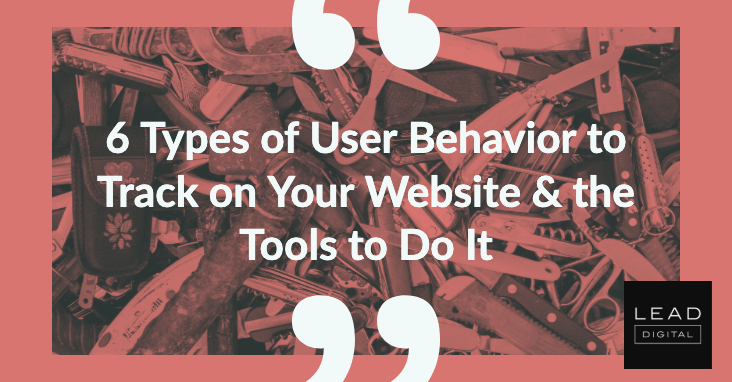 We work hard in our roles whether in SEO, paid search, or other aspects of digital and broader marketing trying to get people to our websites.
We work hard in our roles whether in SEO, paid search, or other aspects of digital and broader marketing trying to get people to our websites.
Websites are focal points for our messaging and getting our audiences to take key actions that we can monetize.
While large brands and marketing firms often have roles and teams that are responsible for the performance of websites, once a visitor enters them through to the final goal or conversion, that’s not the reality for most of us.
Most of us have to rely on our own tools and abilities to monitor user behavior on our sites with the goal of finding ways to improve moving users through the funnel to ultimately get to our conversion goals.
Or, worse yet, we’re leaving that up to chance as we’re already overloaded working on driving organic and paid traffic to our sites to keep the top of the funnel full.
Regardless of where we find ourselves, there are distinct categories of user behavior and we can dig into and specific tools to make our lives easier working to evaluate and improve each of them.
1. User Experience
User experience (UX) is probably the broadest category of user behavior and it could be argued that all user behavior is impacted by it.
It can be difficult to track and measure and often requires collaboration between designers, developers, and marketers if you or your team don’t have a specific role for it.
Behavior to Track
- In-page clicks & mouse movement
- Scroll depth
- User navigation patterns
- Live visitors
- Recordings
- Site speed
How to Get the Data
There are great tools on the market that give us the depth and quality of information that Google Analytics lacks.
We can watch individual visitors live as they navigate through our sites or recordings of their sessions with tools like Lucky Orange, Crazy Egg, and Hotjar.
We also have the ability to review aggregated data and visualizations of how deep visitors scroll, where their mouse pointer goes on the screen, how much time they spend on pages, and much more.
There’s a lot to be gained in these third-party tools beyond what GA can provide and it is important to look at both together to get a complete picture of user experience.
What to Do with the Data
With in-page user experience data you can make decisions that will:
- Help retain visitors on pages.
- Ensure they see the content you want them to.
- Learn how to improve navigation flow to nudge them along to the next page or call to action.
Understanding how users actually use the site versus how you planned or wanted them to is a critical aspect to know and interpret from the data you can collect in user experience tools.
2. Content Performance
Content is fuel for marketing.
It is the foundation and reason why someone comes to our sites.
It’s also what they engage with, whether they spend hours and dozens of visits to our site or if they are coming to a single landing page and converting.
Behavior to Track
- Popularity
- Sharing
- Engagement
- Bounces & Exits
How to Get the Data
Google Analytics is a great direct source of content performance data.
With it we can filter and track which pages are most popular, which search terms (if we have configured GA to see site search data) are being searched, frequency and repeat visits, and what content has the most bounces and exits.
By default, most of these metrics are tracked in GA and we simply have to drill down and filter our way to seeing each layer and meaningful data point.
What to Do with the Data
When we have data showing us what content is getting the most engagement within the site, how people are getting to the content, and what they are doing when they consume it and move to a next step, we can further shape and refine our content strategies.
This includes blog content and impacts the editorial calendar. It also can spell out changes for evergreen content about products or services.
Coupling the content data with the UX data noted previously, we can paint a picture of how we should format our content into sections, pages, sub-pages, and make it as consumable as possible.
3. Conversion Rate Optimization
Conversions are defined by us. They are what we want our site visitors to do.
Whether it is an ecommerce transaction, a lead form submission, or certain subsets of engagement goals, we are typically measuring performance toward a goal.
Optimizing the number of conversions per the number of visits is key to make sure the site is performing at as well as it could and should.
Additionally, the path leading immediately up to a conversion is important.
When we have prospects ready to inquire or buy, we need to get out of their way and make it easy to do. The steps directly leading to conversions have to be measured.
Behavior to Track
- Funnel
- Checkout process
- Variable testing
- Form testing
How to Get the Data
There are several great tools to help with CRO.
These range from Google Analytics to UX tools (e.g., Lucky Orange) to variable testing tools (e.g., Optimizely).
With these tools we can gain insight into how people go through our defined conversion funnels like checkout or form submission processes.
We can also perform variable testing and see how different forms, content, and pages perform.
There’s power in gaining insights into what form field causes users to bail from a conversion process or what page is tripping them up in checking out. – Read more



